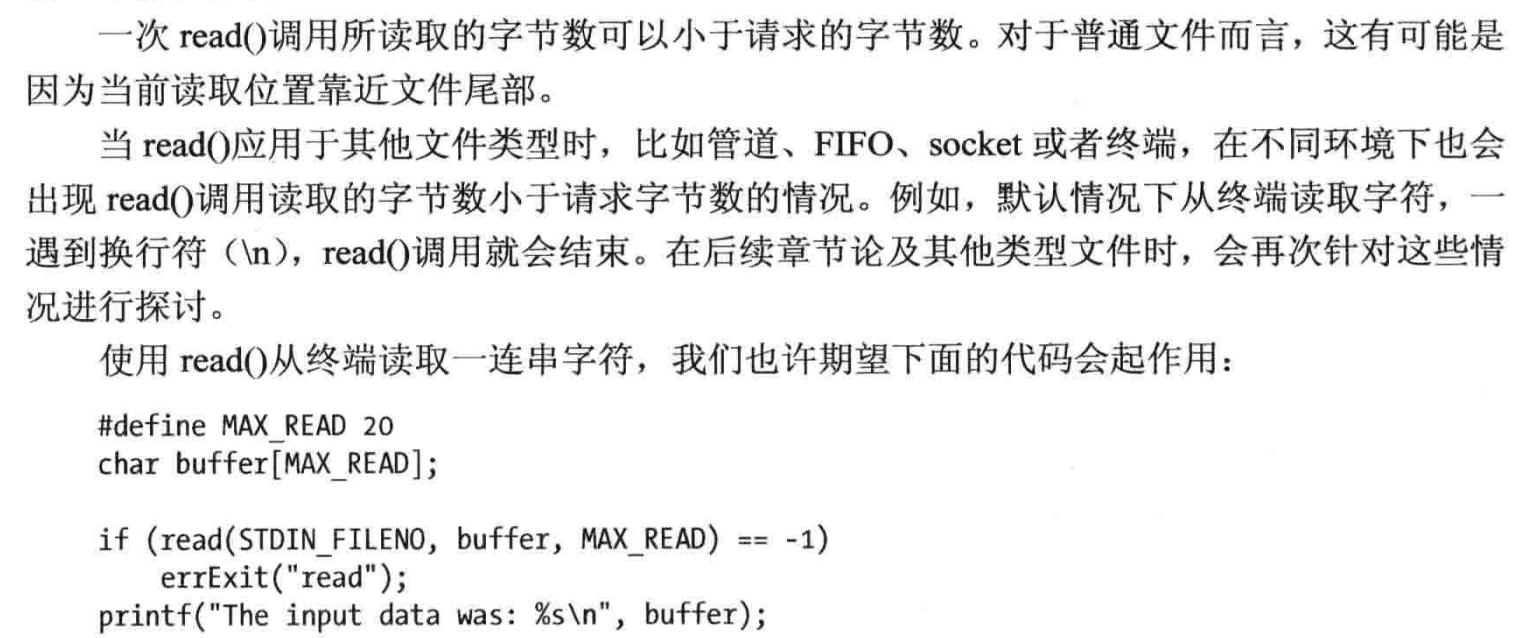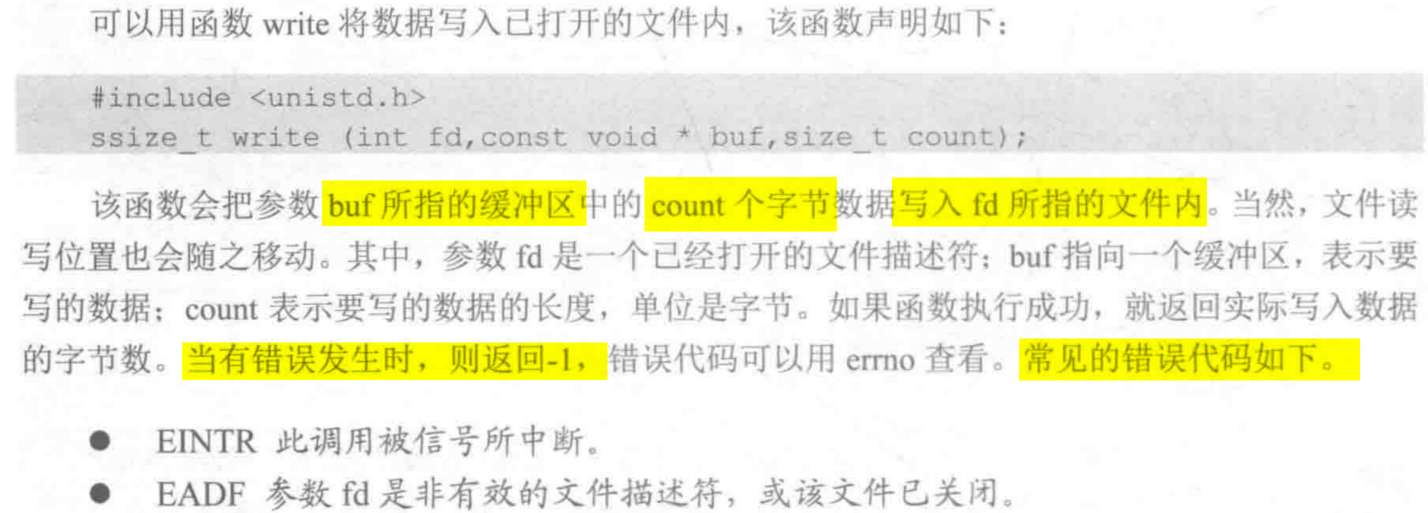文件I/O-read-write
read



代码习惯


常见错误码

#include <stdio.h>
#include <fcntl.h> // open
#include <stdlib.h> // exit
#include <unistd.h> // close\read
// #include <sys/types.h>
// #include <sys/stat.h>
int main(void) {
int fd = -1; // 文件描述符
ssize_t size = -1; // 读取字符数量
char buf[10]; // 读取缓冲区
char fileName[] = "./log.txt"; // 文件名字
fd = open(fileName, O_RDONLY); // 打开文件open
if (fd == -1) {
perror("open error:");
exit(EXIT_FAILURE);
} else {
printf("open %s successfully, fd:%d\n", fileName, fd);
}
do {
size = read(fd, buf, 10); // 读取指定数量字符串
if (size > 0) { // 有效数据,指定字符长度
printf("read %ld bytes:", size); // ‘ssize_t’ {aka ‘long int’}
putchar('\n');
for (int i = 0; i < size; i++) { // 循环打印缓冲区单个字符
putchar(*(buf + i)); // 指针形式打印字符串
}
putc('\n', stdout);
} else {
printf("reach the end of file end\n");
}
} while (size); // 文件末尾为0
return 0;
}
write




#include <stdio.h>
#include <fcntl.h> // open
#include <stdlib.h> // exit
#include <unistd.h> // close\read
#include <string.h> // strlen
// #include <sys/types.h>
// #include <sys/stat.h>
int main(void) {
int fdOpen = -1, fdWrite = -1; // 文件描述符
ssize_t size = -1; // 读取字符数量
ssize_t wsize = -1;
char buf[10]; // 读取缓冲区
char * openFile = "./log.txt"; // 文件名字
char * writeFile = "./copy.txt";
/*打开读取文件*/
fdOpen = open(openFile, O_RDONLY); // 打开文件open
if (fdOpen == -1) {
perror("open error:");
exit(EXIT_FAILURE);
} else {
printf("open %s successfully, fd:%d\n", openFile, fdOpen);
}
/*打开写入文件*/
fdWrite = open(writeFile, O_WRONLY | O_CREAT | O_TRUNC); // 写入的文件
if (fdWrite == -1) {
perror("open error:");
exit(EXIT_FAILURE);
} else {
printf("open %s successfully, fd:%d\n", writeFile, fdWrite);
}
/*循环写入文件*/
do {
size = read(fdOpen, buf, 10); // 读取指定数量字符串
printf("size:%ld\n", size);
if (size > 0) { // 有效数据,指定字符长度
printf("read %ld bytes:", size); // ‘ssize_t’ {aka ‘long int’}
putchar('\n');
for (int i = 0; i < size; i++) { // 循环打印缓冲区单个字符
putchar(*(buf + i)); // 指针形式打印字符串
}
putc('\n', stdout);
wsize = write(fdWrite, buf, strlen(buf)); // 以设定缓冲区大小情况下怎么打印指定大小
printf("Write %ld bytes to file %s\n", wsize, writeFile);
} else {
printf("reach the end of file end\n");
}
} while (size); // 文件末尾为0
close(fdOpen);
close(fdWrite);
return 0;
}
疑问
- 缓冲区设定的技巧,不然会打印失效字符



